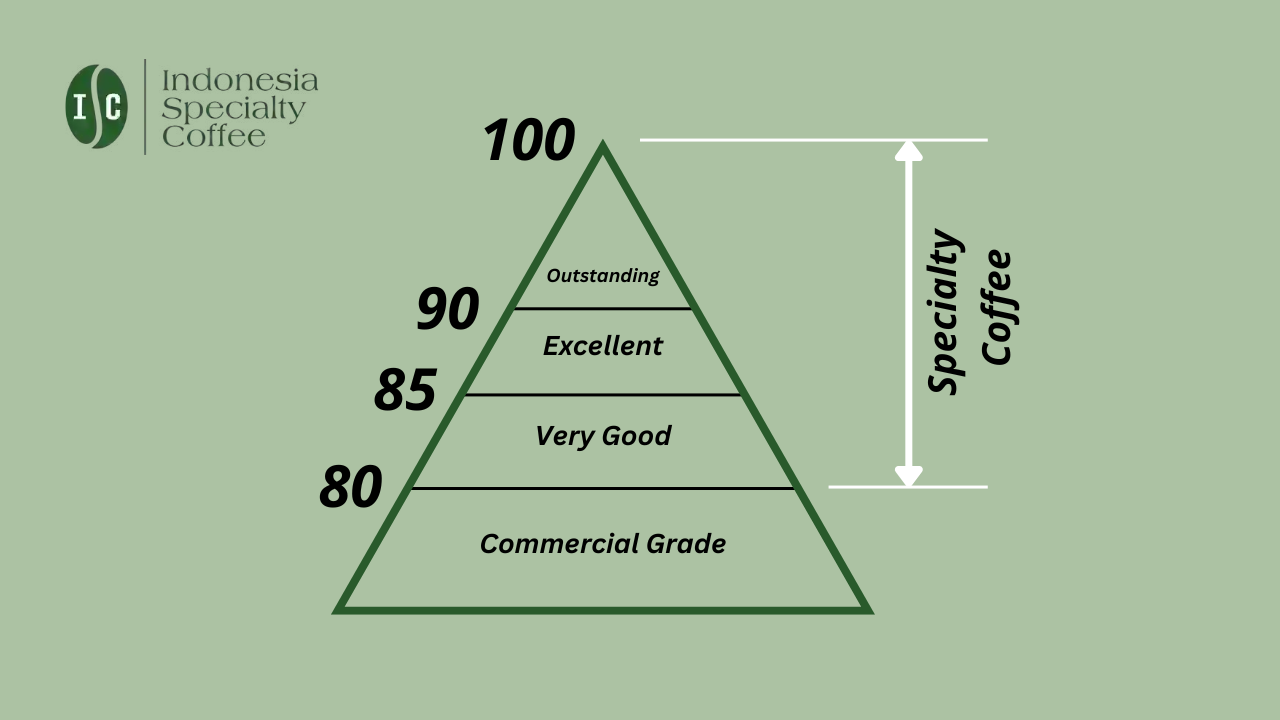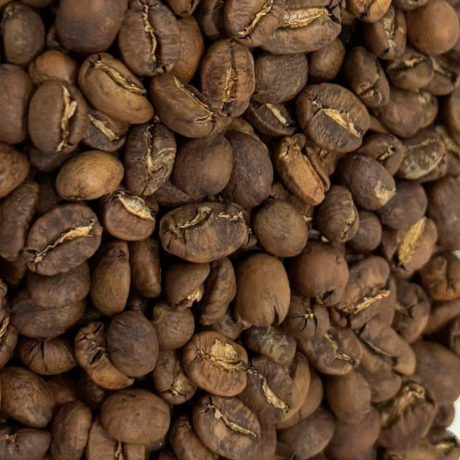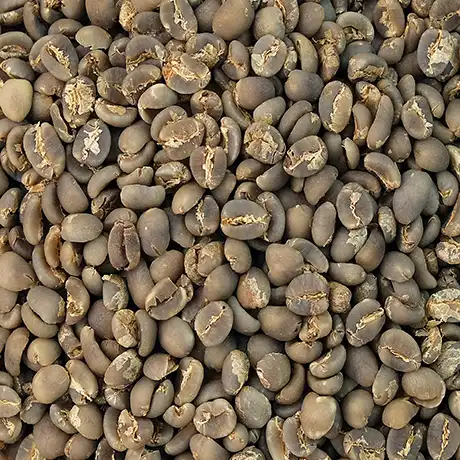Introduction of Coffee Value Assessment (CVA)
For years, the cupping score has been the gold standard for evaluating the quality of coffee, particularly within the specialty coffee industry. Coffee producers, buyers, and enthusiasts alike have relied on this single number to make critical decisions about which beans to grow, buy, and drink. While the cupping score remains an important part of the evaluation process, the Specialty Coffee Association (SCA) has recognized that it may not tell the full story of a coffee’s value. Enter the Coffee Value Assessment (CVA) system—a more comprehensive approach that looks beyond the score to evaluate a coffee holistically.
The CVA system represents a new standard for assessing coffee, offering a broader and more transparent way to understand its value. Rather than focusing solely on sensory attributes, the CVA takes into account physical, sensory, and informational elements, creating a fuller picture of what makes a coffee truly special. It’s not a regulatory change, but rather an evolution that seeks to better serve the needs of everyone in the coffee value chain, from producers to consumers.
This article explores how the CVA system works, why the cupping score is still important but no longer the sole metric, and what this means for the future of the coffee industry.

Specialty Coffee Grading Scale by SCA – Cupping Score
What Happened to the Cupping Score?
For a long time, the cupping score was the primary metric used to evaluate and communicate a coffee’s quality. It provided a straightforward way to grade coffee on a scale—typically from 0 to 100—based on a sensory evaluation that focused on flavor, aroma, acidity, and body. Coffees scoring above 80 points were often considered “specialty,” with higher scores signaling higher quality. This simplicity made the cupping score popular among coffee producers, buyers, and even consumers who used it as a benchmark for quality and price.
However, while the cupping score offers valuable insight into a coffee’s sensory characteristics, it doesn’t tell the whole story. There are many other factors that contribute to a coffee’s overall value, such as its physical condition (size, shape, and defect rate), the information attached to it (origin, processing method, and certifications), and its potential appeal in different markets. Relying solely on a cupping score can sometimes lead to an incomplete or even misleading understanding of a coffee’s worth.
Recognizing this limitation, the SCA developed the Coffee Value Assessment (CVA) system. Rather than abandoning the cupping score, the CVA builds on it by incorporating other important attributes into the evaluation process. This new system aims to provide a more complete and transparent way to assess a coffee’s value, offering a broader perspective that benefits all participants in the coffee industry.
The CVA represents a shift away from the oversimplification of coffee value that the old system risked, introducing a holistic approach that more accurately reflects a coffee’s full potential.
Table of Contents
The Cupping Score is Still Here, but Now It’s One Part of the Picture
While the cupping score remains an integral part of coffee evaluation, the Coffee Value Assessment (CVA) system expands its role by incorporating other critical attributes. The cupping score is no longer the sole metric that defines a coffee’s quality. Instead, it works in tandem with additional assessments to create a comprehensive profile of a coffee’s value.
In the CVA system, the cupping score is one of three key components:
- Physical Attributes: This includes the size, shape, and any defects present in the coffee beans. A coffee’s physical quality can have a significant impact on its value, particularly in terms of consistency, roasting behavior, and appearance.
- Sensory Attributes: These are the flavor, aroma, acidity, and body elements that have traditionally been evaluated through the cupping process. The CVA system enhances this sensory evaluation by splitting it into two categories: descriptive and affective assessments (which we will explore in detail later).
- Informational Attributes: Information about where the coffee was grown, how it was processed, and the certifications it holds all play a crucial role in determining its market value. For example, a coffee grown using organic farming methods or one from a well-known region may carry a premium price due to consumer demand.
By bringing these diverse elements together, the CVA offers a fuller, more accurate picture of a coffee’s overall value. The cupping score is still a valuable tool, but now it’s seen in context with other factors that matter to different market actors. This allows buyers to make more informed decisions based on a wider range of coffee attributes, rather than focusing solely on a single score.
Ultimately, this approach reflects the SCA’s aim to create a fairer, more transparent system that better represents a coffee’s true value—not just its sensory profile, but its full potential across multiple dimensions.
Read also: Indonesian National Standards for Green Coffee Beans: Grading System
Cupping: Separating Descriptive and Affective Assessments
One of the key innovations in the Coffee Value Assessment (CVA) system is the distinction between descriptive and affective assessments in the cupping process. In the previous system, these two concepts were often merged, making it difficult to distinguish between the objective characteristics of a coffee and the subjective preferences of the person evaluating it. The CVA seeks to correct this by separating these two types of assessments, which aligns with best practices in sensory and consumer science.
Descriptive Assessment
Descriptive assessment focuses on the objective evaluation of a coffee’s flavor profile. This means identifying specific attributes like sweetness, acidity, bitterness, and the presence of certain flavors (such as fruity, floral, or nutty notes). These characteristics are recorded as part of a coffee’s sensory attributes, and the goal is to create an accurate, standardized description that can be consistently understood by anyone in the industry.
In this context, the evaluator is not determining whether they like the coffee or not—they are simply describing what they observe. This creates a common language for coffee evaluation, making it easier for producers, buyers, and consumers to communicate about the coffee’s characteristics without the influence of personal preferences.
Affective Assessment
Affective assessment, on the other hand, deals with the subjective impression of a coffee’s quality. This is where personal taste comes into play—whether the evaluator finds the coffee enjoyable or not. While one person may love a bright, acidic coffee with strong citrus notes, another might prefer a smooth, mellow coffee with chocolate undertones. Affective assessment captures this subjective response.
By separating these two types of evaluations, the CVA provides more transparency. It acknowledges that while some attributes can be objectively described, personal preferences vary and should be treated separately. This separation ensures that a coffee’s sensory description is clear and unbiased, while still allowing for subjective preferences to be recorded in the affective assessment.
This shift from blending objective and subjective evaluations to separating them ensures that the industry has a more precise understanding of both what a coffee is and how it feels to the individual taster. It also enables coffee producers and buyers to communicate more effectively, as they can better match coffees to specific markets and consumer preferences based on these assessments.
More Than Just a Score: What Else Does the CVA Measure?
The Coffee Value Assessment (CVA) system is designed to provide a comprehensive evaluation of coffee that goes beyond the traditional cupping score. While the cupping score remains an important element, the CVA incorporates additional factors to create a more holistic profile of each coffee. Here’s a closer look at the additional attributes measured by the CVA:
a. Physical Attributes
Physical attributes refer to the tangible aspects of the coffee beans themselves. This includes:
- Bean Size and Shape: Uniformity in size and shape can impact the roasting process and the final cup quality. Consistent beans roast more evenly, leading to better flavor development.
- Defects: Defects such as broken beans, chips, or discoloration can affect the coffee’s quality. The CVA assesses the extent and types of defects to ensure that only high-quality beans are used.
- Processing Quality: This includes factors like the cleanliness of the beans and their handling before and after processing. Well-processed beans are essential for maintaining the coffee’s intended flavor profile.
By evaluating these physical attributes, the CVA helps ensure that the coffee meets high standards for consistency and quality before it even reaches the cupping table.
b. Sensory Attributes
As previously discussed, sensory attributes are assessed through both descriptive and affective evaluations. The CVA expands on this by providing a detailed profile of:
- Flavor: The range of flavors present in the coffee, such as fruity, nutty, or spicy, and how these flavors interact.
- Aroma: The scents that contribute to the overall sensory experience of the coffee, which can vary from floral to earthy.
- Acidity: The brightness or sharpness of the coffee, which can influence its perceived freshness and complexity.
- Body: The texture and weight of the coffee in the mouth, affecting its richness and depth.
c. Informational Attributes
Informational attributes encompass the background information about the coffee, which adds context to its value:
- Origin: The geographical location where the coffee is grown, which can influence its flavor profile due to varying climates and soil conditions.
- Processing Method: The method used to process the coffee beans, such as washed, natural, or honey processed, which impacts the final taste.
- Certifications: Any certifications or designations, such as organic or fair trade, that can affect the coffee’s market value and appeal.
By considering these additional attributes, the CVA system provides a more nuanced and complete understanding of a coffee’s value. It recognizes that coffee is not just about how it tastes, but also about its physical condition, processing quality, and contextual information. This comprehensive approach allows for better differentiation and marketing of coffee, ensuring that all aspects of its value are taken into account.
What Does This Mean for Coffee Producers?
The introduction of the Coffee Value Assessment (CVA) system brings significant changes to how coffee producers can showcase their products. Here’s how the new system impacts producers and what it means for their role in the coffee market:
a. Moving Beyond a Single Score
Under the previous system, coffee producers often relied heavily on achieving a high cupping score to market their products. A single, high score could open doors to premium markets and higher prices. However, this focus on a single metric sometimes overshadowed other important aspects of the coffee’s value.
With the CVA system, producers now have the opportunity to present a more detailed profile of their coffee. The system takes into account physical, sensory, and informational attributes, allowing producers to highlight various strengths of their coffee beyond just the cupping score. This means that a coffee with a slightly lower cupping score but exceptional physical quality, unique flavor profile, or impressive processing method can still be valued highly.
b. Enhanced Marketing Opportunities
The CVA system provides a richer narrative for coffee producers to communicate with buyers. Instead of just quoting a cupping score, producers can now share detailed information about their coffee’s physical attributes, processing methods, and unique characteristics. This comprehensive profile helps buyers make more informed decisions and can enhance the coffee’s marketability.
For example, a coffee that is organically grown or comes from a renowned origin can be positioned more effectively with the CVA’s focus on informational attributes. This can attract buyers who are interested in specific attributes beyond sensory quality, such as sustainability or regional uniqueness.
c. Better Matching to Market Needs
The CVA’s holistic approach allows producers to better align their coffee with different market needs. By understanding and presenting their coffee’s full profile, producers can target specific segments of the market that value particular attributes. For instance, a coffee with exceptional physical quality might be particularly appealing to roasters who prioritize consistency in their blends, while a coffee with unique sensory attributes might attract specialty coffee shops looking for distinctive flavors.
d. Transparent and Fair Evaluation
The CVA system aims to create a more transparent and fair evaluation process. By breaking down the various attributes that contribute to a coffee’s value, the system helps prevent the overemphasis on a single score. This transparency benefits producers by giving them a clearer understanding of how their coffee is evaluated and by ensuring that all important factors are considered.
Producers can use this transparency to their advantage by showcasing the full range of their coffee’s qualities and leveraging them in negotiations and marketing efforts.
Overall, the CVA system offers producers a more nuanced and effective way to present their coffee, enabling them to tap into new opportunities and markets while ensuring a fair and comprehensive evaluation of their products.
How Will This Impact the Coffee Industry as a Whole?
The Coffee Value Assessment (CVA) system is poised to bring a shift across the entire coffee industry. By moving beyond the traditional reliance on the cupping score, the CVA creates a more holistic and transparent approach to evaluating coffee. Here’s how the broader industry is likely to be affected:
a. A More Transparent Value Chain
One of the key goals of the CVA system is to establish a common language for all actors in the coffee value chain—from producers to consumers. By providing a standardized method to assess and describe a coffee’s attributes, the CVA enables clearer communication between growers, traders, roasters, and even consumers.
This transparency helps ensure that the value of a coffee is more accurately represented at every stage. Producers can better showcase the strengths of their coffee, traders can make more informed purchasing decisions, and consumers can understand what makes a particular coffee unique beyond a single cupping score. Over time, this could help drive more informed purchasing decisions and potentially shift consumer preferences toward higher-value coffees that may have been overlooked in the past.
b. Diversifying Coffee Markets
By offering a more detailed and nuanced evaluation of coffee, the CVA system allows for greater differentiation among products. This could lead to the emergence of new market segments focused on specific attributes, such as coffee with unique processing methods, specific regional characteristics, or exceptional physical quality.
In markets where the cupping score once dominated, the CVA opens doors for coffee producers and buyers to tap into new niches. For example, specialty coffee roasters might seek out coffees with distinctive informational attributes, while large-scale commercial buyers may prioritize physical consistency and processing quality. This ability to cater to more diverse preferences could lead to greater market opportunities for coffee producers, particularly those looking to differentiate their products.
c. Shifting Consumer Expectations
The CVA system is also likely to change how consumers perceive and purchase coffee. Rather than relying on a single number (like a cupping score), consumers will have access to a more detailed profile of each coffee’s attributes. This may lead to a shift in consumer preferences, with more buyers looking for coffee that aligns with their specific tastes or values, such as environmentally sustainable practices, fair trade certifications, or unique flavor profiles.
This shift may require the industry to better educate consumers about the nuances of coffee evaluation. For producers and retailers, the ability to communicate these attributes effectively will be crucial to capturing consumer interest in an increasingly competitive market.
d. Long-Term Industry Growth
Ultimately, the CVA’s comprehensive approach to evaluating coffee could contribute to long-term growth and sustainability in the coffee industry. By giving producers more tools to showcase the full value of their coffee, the system encourages quality improvements at every stage of production. As producers focus on optimizing the physical, sensory, and informational attributes of their coffee, the overall quality of coffee available in the market is likely to rise.
For the coffee industry as a whole, the CVA represents a more transparent and equitable way to assess coffee’s value, promoting fairness and consistency in pricing and quality. In the long run, this could lead to stronger relationships between producers, buyers, and consumers, fostering a more sustainable and resilient global coffee market.
Is the CVA a New Regulation?
The introduction of the Coffee Value Assessment (CVA) system might be perceived by some as a significant change or new regulation within the coffee industry. However, it’s important to clarify that the CVA is not a regulatory mandate but rather a new standard for coffee evaluation developed by the Specialty Coffee Association (SCA).
a. Voluntary Standard, Not a Regulation
The CVA system is a voluntary framework designed to enhance the way coffee is assessed and described. It is not a legal requirement or a regulation that mandates how coffee must be evaluated. Instead, it offers a more comprehensive approach to understanding and communicating coffee’s value, which industry participants can choose to adopt.
This means that coffee producers, buyers, and other stakeholders are not obligated to use the CVA system. However, those who choose to adopt it can benefit from its more detailed and transparent evaluation process. The CVA aims to provide a richer, more nuanced understanding of coffee, helping industry participants make better-informed decisions and improve the overall quality of coffee in the market.
b. Enhancing, Not Replacing
The CVA system enhances the existing methods of coffee evaluation rather than replacing them. The cupping score, which has long been a cornerstone of coffee assessment, remains an integral part of the CVA. The CVA builds upon the cupping score by adding other dimensions of evaluation, such as physical and informational attributes, to create a more holistic profile of each coffee.
This approach allows industry participants to benefit from both the familiar cupping score and the new attributes introduced by the CVA, providing a more comprehensive view of a coffee’s value without discarding established practices.
c. Potential for Industry Adoption
While the CVA is not mandatory, its adoption may become more widespread as industry stakeholders recognize the advantages of a more detailed evaluation system. Over time, as the CVA demonstrates its value in providing a clearer, more transparent assessment of coffee, more producers, buyers, and roasters may choose to incorporate it into their practices.
In this sense, the CVA represents an evolution in coffee evaluation, offering a tool for those who wish to explore a more detailed and holistic understanding of coffee’s value. It aligns with industry trends towards greater transparency and quality improvement, supporting a more informed and fair coffee market.
d. Future Implications
As the industry adopts the CVA, it may influence how coffee is traded, marketed, and priced. Contracts and purchasing decisions might start to include the detailed profiles provided by the CVA, alongside traditional cupping scores. This shift could lead to a more nuanced and equitable system for determining coffee’s value, benefiting all participants in the coffee value chain.
In summary, while the CVA system introduces a new approach to coffee evaluation, it is not a regulatory change. It is a voluntary, enhanced framework designed to provide a more complete and transparent understanding of coffee’s value.
Source: A System to Assess Coffee Value by SCA
Interested in Indonesian raw coffee beans? check our green coffee beans product. Contact us at info@specialtycoffee.id or WhatsApp at +62 811 6380 606 to place your order.





